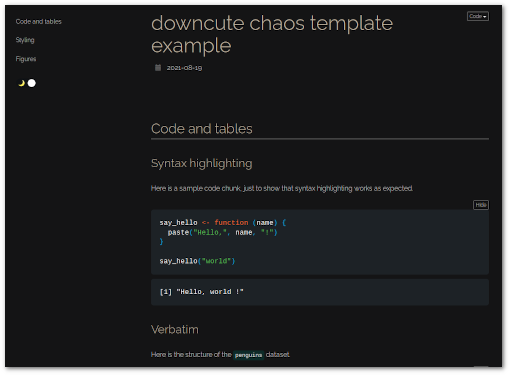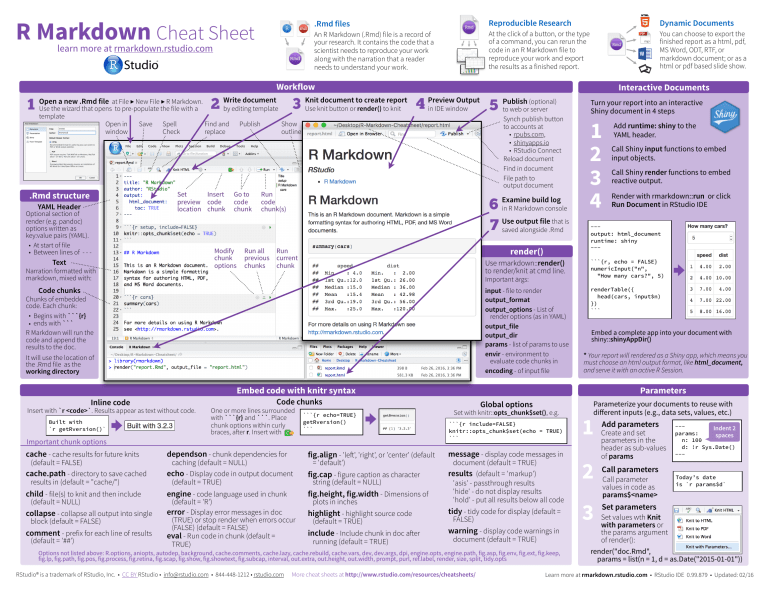
Highlight options include: "default", "tango", "pygments", "kate", "monochrome", "espresso", "zenburn", "haddock", "breezedark", "textmate".
#RMARKDOWN THEMES HOW TO#
You include htmlwidgets in an R Markdown document just like you include R plots.If using the Simple R Markdown website option to create a website then the default available themes options include: "cerulean", "cosmo", "cyborg", "darkly", "flatly", "journal", "lumen", "paper", "readable", "sandstone", "simplex", "slate", "spacelab", "superhero", "united", "yeti"…check them out here. How to start The first step is to get R and RStudio, and install the package rmarkdown with the code install.packages('rmarkdown') In the last versions you can directly create presentations going to File -> New File -> R Presentation. You can find example uses of several of the more popular htmlwidgets in the htmlwidgets showcase and browse all available widgets in the gallery.

There are over 30 packages on CRAN which provide htmlwidgets. This object can be used to set or get themes in knitr for syntax highlighting. VisNetwork, an interface to the network visualization capabilities of the vis.js library.

Pre-Packaged Themes There are several other canned themes you can use rather than the default theme. An example of the default theme used in R Markdown HTML documents is shown below. Highcharter, a rich R interface to the popular Highcharts JavaScript graphics library. Customization & Configuration Now that you have a document ready to go, you’ll want to customize it to make it look the way you want. R Markdown is a great way to integrate R code into a document. Rbokeh, an interface to Bokeh, a powerful declarative Bokeh framework for creating web-based plots. Themes Themes Here are some screenshots of the HTML pages generated by prettydoc with different themes. Open in app Ten awesome R Markdown tricks R Markdown is more versatile than you might think Though I code in both R and Python, R Markdown is my only route for writing reports, blogs or books. Plotly, which via its ggplotly interface allows you to easily translate your ggplot2 graphics to an interactive web-based version. If you are not using RStudio then you simply need to call the rmarkdown::render function, for example: Note that both methods use the same mechanism RStudio’s Knit button calls rmarkdown::render () under the hood. Leaflet, a library for creating dynamic maps that support panning and zooming, with various annotations like markers, polygons, and popups.ĭygraphs, which provides rich facilities for charting time-series data and includes support for many interactive features including series/point highlighting, zooming, and panning. If you are using RStudio, then the Knit button (Ctrl+Shift+K) will render the document and display a preview of it. Charts based on htmlwidgets are ideal for use with flexdashboard because they can dynamically re-size themselves, so will nearly always fit perfectly within the bounds of their flexdashboard containers. The htmlwidgets framework provides high-level R bindings for JavaScript data visualization libraries. In fact, the tabset examples above use header attributes in two places: Column is a valid set of header attributes that you might use in flexdashboard. ANOVA in R Josiah Parry 226 views 1 year.

Flexdashboard relies heavily on pandoc’s header attribute syntax and you’ll see the syntax referenced throughout our documentation. In this video we will quickly review how to apply themes to your R Markdown document to make it a bit prettier and bit more fun and engaging to consume.


 0 kommentar(er)
0 kommentar(er)
